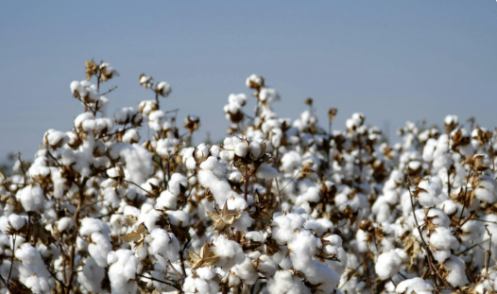On August 28th (Thursday), the day after the 50% tariff imposed by the United States on Indian goods officially took effect, the Indian government extended the exemption from import tariffs on raw cotton until December 31st, 2025.
Before the exemption, approximately 11% of tariffs were imposed on imported cotton into India. The Ministry of Finance stated that the initially notified exemption period was from August 19th to September 30th, and it has now been extended to cover the last three months of this year.
This decision, although aimed at providing support to the domestic textile industry before the holiday season, is also seen as a calibrated stance towards Washington amid tense trade relations.
This occurred at a crucial moment in the India-US trade relationship. Washington recently imposed high reciprocal tariffs on Indian exports, and trade negotiations have stalled. In February this year, the leaders of the two countries agreed to sign the first phase of the bilateral trade agreement by autumn 2025.

Ajay Srivastava, the founder of the Global Trade Research Initiative (GTRI), an Indian think tank, said: “This is a calibrated move that addresses the concerns of the United States while protecting domestic sensitivities.” He added that the extension period would allow New Delhi to retain its negotiating leverage in bilateral negotiations.
According to The Times of India, senior Indian government officials confirmed that the United States has cancelled its plan to send negotiation representatives to New Delhi for the sixth round of bilateral trade negotiations from August 25th to 30th. The cancellation of the US delegation’s visit to India indicates that the first phase of the India-US bilateral trade agreement negotiations may not be able to be completed as originally planned before this autumn.
The cotton production in India has been declining, dropping from approximately 33.7 million bales in the fiscal year 2023 to about 30.7 million bales in the fiscal year 2025. This has forced textile factories to increase imports. Industry associations have been warning that the supply shortage could push up the costs of cotton yarn and clothing, threatening the competitiveness of exports.
For American exporters, this move presents a direct opportunity. In the fiscal year 2025, the 1.2 billion US dollars worth of cotton imported by India was almost entirely of the grade with a fiber length of 28 millimeters or more. The United States is the main supplier in this field.
An executive from a leading clothing exporter association said: “Cotton is the sticking point in the negotiations. This move can inject goodwill into the dialogue and may pave the way for broader tariff concessions for textiles.”
The import of cotton in India increased sharply from 1.52 million bales in the fiscal year 2024 to 2.71 million bales in the fiscal year 2025. The main suppliers were the United States, Brazil, Egypt, Benin, Tanzania and other African countries.
Although Washington’s imposition of tariffs has cast a shadow over the bilateral trade prospects, New Delhi’s actions on the cotton issue have been interpreted as an attempt to ease the dispute.
According to the survey results of Crisil Ratings, as the 50% tariff imposed by the United States on Indian imported goods came into effect on August 27th, the revenue growth of the Indian garment industry will decrease by nearly half compared to the previous fiscal year. Coupled with the decline in profitability, it will affect the credit indicators of industry participants. The company stated that this impact will vary from enterprise to enterprise, as some enterprises earn more than 40% of their revenue from the United States.
Post time: Sep-03-2025

